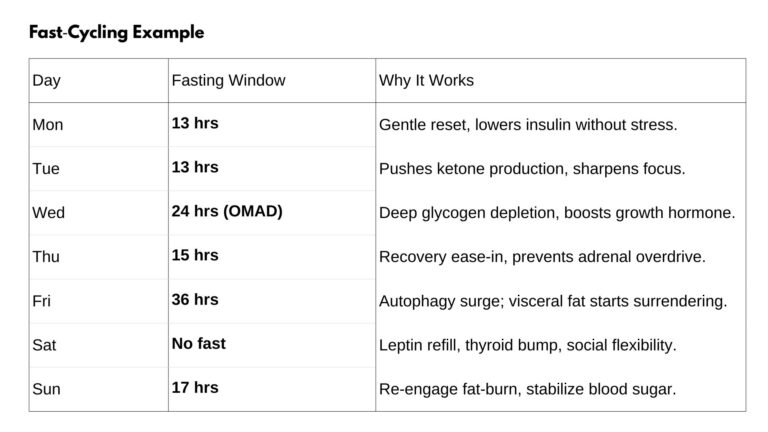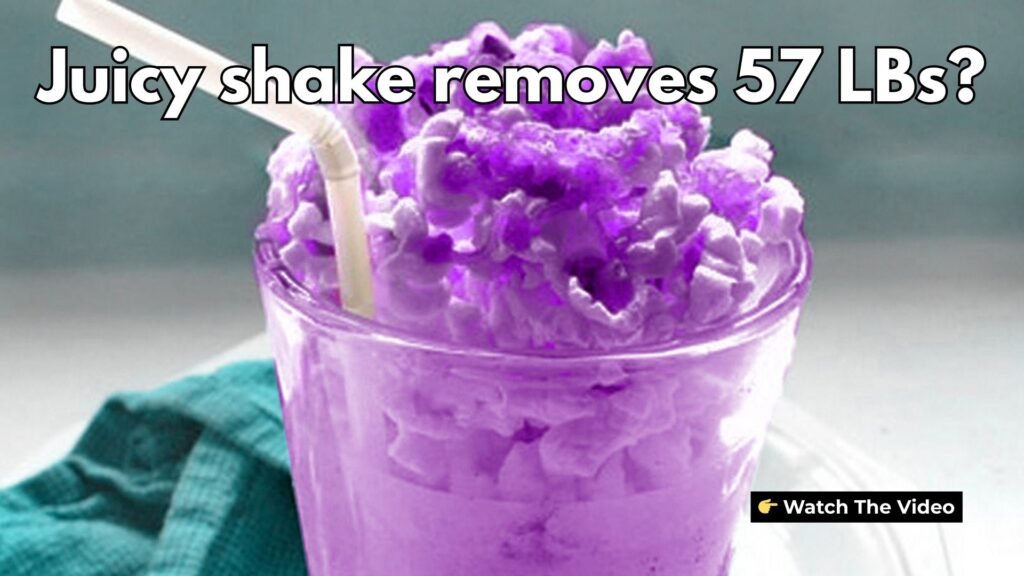So, you’ve heard about intermittent fasting, right? It’s like, everywhere. People are saying it helps you lose weight, get more energy, and feel healthier. Maybe you’ve even tried it yourself. But here’s the thing. Are you actually seeing those awesome results? Or are you, like, totally stuck? Or even worse, has the number on the scale gone up? If you’re nodding your head, you’re definitely not alone. Lots of people try intermittent fasting and hit a wall. And guess what? It’s usually because of some sneaky intermittent fasting mistakes.
The truth is, those mistakes are often the real problem, not intermittent fasting itself. You might be doing a few things that are accidentally making it harder to lose weight.
In this article, we’re going to break down the top 5 intermittent fasting mistakes that could be messing up your progress. We’ll explain why they cause problems and, super important, we’ll give you easy ways to fix them. You’ll learn how to do intermittent fasting the right way, so you can finally lose that weight, feel amazing, and reach your goals. So, let’s dive in!

Table of Contents
ToggleWhy Intermittent Fasting Sometimes Backfires
Intermittent fasting wins headlines because, done right, it drops insulin, torches visceral fat, and sharpens focus. But miss a few critical nuances and the plan flips: your ancient survival wiring slams the brakes on fat‑burning, hoards every calorie, and leaves you hungrier than ever.
Here’s what really happens inside:
- The “Thrifty Gene” Alarm. Your metabolism is hard‑coded to survive famine. Repeated, predictable fasts signal scarcity, so your body lowers daily energy expenditure and stockpiles fat for later. Result? Weight gain even on fewer calories.
- Hormone Whiplash. Erratic eating windows—or the wrong foods when you do eat—spike cortisol and insulin together. That lethal duo locks fat cells and blocks leptin (the “I’m full” signal), so you feel ravenous while storing more.
- Toxin Traffic Jam. Plastics, processed oils, and artificial sweeteners clog liver pathways. When detox stalls, the body “warehouses” chemicals in fat tissue for safety, making it nearly impossible to slim down no matter how long you fast.
Intermittent Fasting Mistakes #1: Not Varying Your Fasts
Picture your metabolism as the shrewdest detective in town. Give it the exact same clues every day—say, a tidy 16‑hour fast that breaks at 10 a.m. sharp—and within a week it’s cracked the case: “Food predictably arrives at this hour, disappears at that hour. Threat level: low.” The moment your biology feels safe, it slides into energy‑saving mode, dialing down thyroid output, trimming calorie burn, and—here’s the kicker—telling fat cells to hang on to every last gram “just in case.” What started as a fat‑scorching routine quietly mutates into a weight‑maintenance plan (or worse, a weight‑gain trap).
Why Variation Is Important for Your Metabolism
- Keeps Hormones Guessing. Growth hormone, insulin, cortisol, and leptin all operate on rhythm. Shake up meal timing and you jolt those signals awake, preventing the adaptive slowdown that stalls progress.
- Triggers Multiple “Fuel Systems.” Short fasts tap glycogen; medium fasts boost ketones; long fasts switch on deep autophagy. Cycling windows lets you harvest every benefit instead of getting stuck in one metabolic gear.
- Mimics Ancestral Reality. Our hunter‑gatherer ancestors didn’t stumble upon identical food portions at identical times. By alternating 13‑, 17‑, 24‑, and 36‑hour fasts—and throwing in an occasional “no‑fast” feast day—you align with the feast‑famine pattern your DNA still expects, flipping on fat‑burn genes while keeping muscle‑preserving hormones high.
- Prevents Psychological Burnout. Knowing a shorter window or full eating day is always around the corner crushes deprivation fatigue, making the lifestyle effortless instead of restrictive.

Follow this seven‑day cycle for just two weeks and watch what happens: morning inflammation drops, mental clarity spikes, and—most visibly—the scale finally slides south again. By refusing to let your metabolism predict the script, you transform fasting from a static routine into a dynamic fat‑loss accelerator.
Intermittent Fasting Mistakes #2: Not Fasting Long Enough
Most intermittent fasters treat 16 hours like a magic number. It’s popular, comfortable, and—yes—great for lowering insulin. But if you never push past that mark, you slam the door on the most powerful repair switch your body owns: autophagy.
What Is Autophagy
Think of every cell in your body as a tiny house. Over time, clutter piles up—broken proteins, damaged mitochondria, even little bits of viruses and toxins. Autophagy is the built‑in “spring‑cleaning crew.” Once your body senses it’s been without food long enough, usually around the 18‑ to 24‑hour point, it flips a molecular light switch. Suddenly those cell houses hire a janitor: they bag the trash, recycle usable parts, and burn the rest for fuel.
Why it matters for fat‑loss
Clean cells run hotter, meaning they burn calories more efficiently. Damaged cells, by contrast, act like old appliances—slow, energy‑guzzling, and prone to storage mode.
Why 16 hours isn’t enough
At 16 hours, insulin is down, but the autophagy switch is only starting to flicker. You need 24–36 hours to keep it fully on and let the cleanup crew finish the job.
The Long‑Fast Advantage, Layer by Layer
- Deep Detox: Autophagy breaks down the very proteins that trap heavy metals and excess estrogen, freeing the liver to flush them out.
- Hormone Reset: Longer fasts spike growth hormone up to 2,000 percent, preserving muscle while targeting fat.
- Stem‑Cell Boost: Studies show 36‑hour fasts prompt brand‑new stem cells in the gut and immune system, improving digestion and lowering inflammation—two secret saboteurs of weight‑loss stalls.
- Metabolic Flexibility: Cycling into a 36‑ or 48‑hour fast trains your body to switch fuel sources (glucose → fat → ketones) on command. That skill keeps pounds off even when life gets messy.

Repeat once per month. In Jason Fung’s clinic, patients who adopt this protocol often drop a full clothing size within eight weeks—even if their weight was stuck for years.
Refusing to go beyond 16 hours is like owning a self‑cleaning oven and never hitting the button. Embrace a strategic long fast, and you’ll ignite autophagy, detox stubborn fat cells, and watch the scale finally reward your discipline.
Intermittent Fasting Mistakes #3: Ignoring Food Quality
You crush your fast, open your eating window, and proudly reach for a “keto” brownie, a cauliflower‑crust pizza, or a zero‑calorie cola. They’re carb‑free, sugar‑free, gluten‑free—basically halo foods, right? Wrong. Many popular diet products are nothing more than “healthy” junk: ultra‑processed, chemical‑laced impostors that light up insulin like a Christmas tree, inflame your gut, and shove detox pathways into gridlock. Let’s pull back the marketing curtain.
The Three Faces of “Healthy” Junk
1. Dirty Oils Disguised as Health Foods
Common Culprits: Almond‑flour crackers fried in canola, avocado mayo bulked with soybean oil, protein bars bound with sunflower lecithin.
Why They Hurt: Industrial seed oils oxidize under factory heat, creating aldehydes that trigger cellular inflammation and insulin resistance. One study found these oils increase obesity risk by 62 percent compared with virgin olive oil.
2. Artificial Sweetener Land Mines
Common Culprits: Sucralose‑sweetened electrolyte packets, “diet” sodas, sugar‑free gummies.
Why They Hurt: Research shows sucralose and aspartame can disrupt gut bacteria in just seven days, driving blood‑sugar swings worse than real sugar. Cue cravings, fat storage, and brain fog—exactly what you hoped fasting would fix.
3. Franken‑Carb Keto Snacks
Common Culprits: Low‑net‑carb tortillas, keto bread, cauliflower rice frozen dinners.
Why They Hurt: Manufacturers play label gymnastics—subtracting fiber, sugar alcohols, and “allulose credits”—to advertise 3 net carbs. Your body, however, still recognizes most of those carbs and releases insulin accordingly. Result: you’re back in storage mode before you finish chewing.
How “Healthy” Junk Sabotages Your Fast
- Insulin Creep: Even slight spikes during the eating window prolong the time it takes insulin to drop the next day, cutting into your fat‑burn hours.
- Leptin Confusion: Artificial ingredients scramble fullness signals, so you’re oddly hungry again an hour later.
- Toxin Overload: Chemical preservatives and plasticizers (hello, BPA‑lined cans) park in fat tissue. Your body clings to those fat cells to “store the poison safely,” making weight‑loss painfully slow.

Golden Rule: If it has a barcode and a “health” claim, treat it with suspicion.
Build a Plate That Turbo‑Charges Your Fast
1. Good‑Fat Foundation
Sources: Avocado, extra‑virgin olive oil, pasture‑raised ghee, wild‑caught salmon.
Benefit: Supplies steady energy, blunts post‑meal glucose, feeds fat‑burn instead of blocking it.
2. Nature’s Carbs (Timing Hack)
Sources: Sweet potato, berries, beets.
Benefit: Packed with fiber and antioxidants; eaten at night they restore glycogen without spiking daytime insulin.
3. Detox‑Friendly Protein
Sources: Grass‑fed beef, organic chicken, lentils sprouted at home.
Benefit: Delivers amino acids for muscle repair while avoiding antibiotic residues that disrupt hormones.
4. Flavor Without Fallout
Use: Fresh herbs, pink salt, apple‑cider vinegar, turmeric, garlic.
Benefit: Boosts liver enzymes and insulin sensitivity instead of burying them under MSG and “natural flavors.”
Your fasting window can only do half the job. If the foods that break your fast are laced with dirty oils, sneaky sweeteners, and bar‑coded carbs, you’re pouring sugar in the gas tank of a Ferrari. Clean fuel—whole foods, good fats, nature’s carbs—lets the engine roar, torches fat, and finally rewards your fasting discipline with the lean, vibrant body you signed up for.
Intermittent Fasting Mistakes #4: Ignoring Detox Pathways
Picture your fat cells as tiny storage lockers. Whenever your liver is too backed‑up to neutralize chemicals—from plastics, pesticides, or even excess stress hormones—it rents extra locker space and stuffs those toxins inside. Your body will not spit out the key until it’s sure there’s a safe exit route. That means you can fast perfectly, eat pristinely, and still cling to stubborn belly blubber if your detox highways resemble a city grid‑locked at rush hour.
How to Detox Your Body’s Exit Routes
1. Make Daily Bowel Movements Non‑Negotiable
Think of your colon as the final trash chute; if waste lingers, toxins recirculate and signal fat cells to hang tight. Hydrate with two liters of mineral‑rich water, add a tablespoon of chia or freshly ground flax each morning, and bump magnesium citrate to 300–400 mg at night until you’re “going” with enviable regularity.
2. Recruit Your Skin With a Sixty‑Second Dry‑Brush
Your skin is the body’s largest eliminative organ. A quick dry‑brushing ritual before the shower sweeps dead cells away and pumps lymph fluid toward drainage points. Use long strokes toward the heart, then focus extra passes over armpits and the right‑side rib cage where the liver sits. Follow with a contrast shower—30 seconds hot, 15 seconds cold—for three cycles to flush metabolic debris.
3. Show Your Liver Direct Love
Three evenings a week, spread a palm‑sized layer of castor oil on a flannel cloth, lay it over the liver, cover with plastic wrap, add a heating pad, and relax for 45 minutes. Ricinoleic acid thins stagnant bile—your body’s chemical conveyor belt—so toxins can hitch a ride out instead of bottling up in fat.
4. Feed Phase‑Two Detox Enzymes
Pile your plate with cruciferous veggies (broccoli sprouts, arugula, cauliflower), sulfur‑rich foods (garlic, onions), and shoot a teaspoon of fresh lemon juice before meals. These compounds power the enzymatic machinery that converts fat‑soluble poisons into water‑soluble “take‑out,” ready for urine or sweat removal.
5. Sweat With Intention
A 20‑minute sauna or brisk incline walk until you glisten not only burns calories but also forces heavy metals and plastic residues out through the dermal layer. Wipe sweat away promptly so it doesn’t re‑absorb, and replenish lost minerals with a pinch of sea salt in your water.
Commit to this multi‑channel evacuation plan for fourteen days and watch the magic: rings loosen, morning puffiness fades, and—most telling—your scale finally budges because those fat‑cell lockers no longer have a toxic job to do. When the exits flow freely, your body happily downsizes storage, and every hour you spend fasting translates into visible, feel‑good results.
Intermittent Fasting Mistakes #5: Fasting Too Much, Too Consistently
You’ve mastered OMAD, conquered 18‑hour windows, and take pride in out‑fasting everyone in your social feed. Yet the scale hasn’t budged for weeks, your cravings are creeping back, and workouts feel like slogging through mud. What gives? Your metabolism is waving a red flag that too many fasters ignore: it needs a re‑feed to keep burning.
Why Hitting “Pause” Accelerates Results
1. Metabolic Rigidity vs. Flexibility
Fasting trains your body to run on ketones, but over‑training any pathway breeds rigidity. A brief return to balanced meals restores glucose handling and reminds mitochondria to flip fuels on command—a hallmark of a truly flexible, fat‑adapted metabolism.
2. Leptin & Thyroid Reset
Chronic calorie gaps drop leptin—the hormone that tells your brain you’re well‑fed—and dial down active thyroid hormone (T3). Translation: slower metabolism, colder hands, and stubborn fat. A 7‑ to 14‑day break refills leptin stores and boosts T3 production, revving your metabolic engine for the next fasting cycle.
3. Muscle Protein Synthesis Surge
Constant catabolic (break‑down) states can nibble at lean tissue. Strategic re‑feeds flood muscles with amino acids and insulin—the only time you want it high—sparking growth and elevating resting calorie burn.
4. Gut Microbiome Diversity
Extended fasting favors certain bacteria while starving others, potentially shrinking microbial diversity. A variety of fibrous veggies, resistant starches, and polyphenol‑rich fruits during your break reseed the gut garden, improving nutrient absorption and lowering systemic inflammation.
5. Psychological Recharge
Let’s face it—monitoring every clock tick can drain willpower. Planned pauses create mental white space, so you return to fasting refreshed instead of resentful, turning a “diet” into a lifelong rhythm.
The Two‑Week Re‑Feed Blueprint
- Days 1‑3: Three nutrient‑dense meals; prioritize wild protein, good fats, colorful carbs. Keep sugar under 25 g to avoid insulin whiplash.
- Days 4‑7: Maintain three meals, but shrink dinner by 25 percent to ease back toward compression.
- Days 8‑10: Shift to two meals (early lunch, early dinner) just shy of 12‑hour fasting.
- Days 11‑14: Add one 15‑hour fast, one 18‑hour fast, and finish with a 24‑hour OMAD to glide seamlessly into your normal fast‑cycling schedule.
Follow this protocol and watch the plateau crumble: energy climbs, sleep deepens, gym performance pops, and most importantly, the scale resumes its downward march. Remember, even race‑cars pit to refuel. Give your metabolism the same courtesy, and it will reward you with faster, steadier fat‑loss for the long haul.
Final Thought
Fat‑loss frustration almost always traces back to a handful of overlooked intermittent fasting mistakes. Rrepeating the same window, never pushing past 16 hours, breaking your fast with “healthy” junk, neglecting detox pathways, or refusing to schedule a purposeful re‑feed.
Fix these missteps by cycling your fasts, embracing an occasional 36‑hour reset, fueling with real foods and clean fats, actively opening your body’s exit routes, and honoring a short break when progress stalls, and you’ll transform fasting from a sluggish stalemate into a flexible, sustainable engine that keeps the scale sliding—and your energy soaring—for good.







